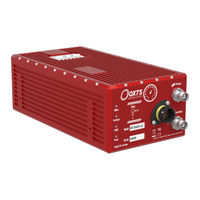OXTS RT3003 Manuals
Manuals and User Guides for OXTS RT3003. We have 2 OXTS RT3003 manuals available for free PDF download: User Manual
OXTS RT3003 User Manual (133 pages)
Brand: OXTS
|
Category: Measuring Instruments
|
Size: 6 MB
Table of Contents
Advertisement
OXTS RT3003 User Manual (132 pages)
GNSS-aided inertial measurement systems
Brand: OXTS
|
Category: Measuring Instruments
|
Size: 3 MB
Table of Contents
Advertisement

